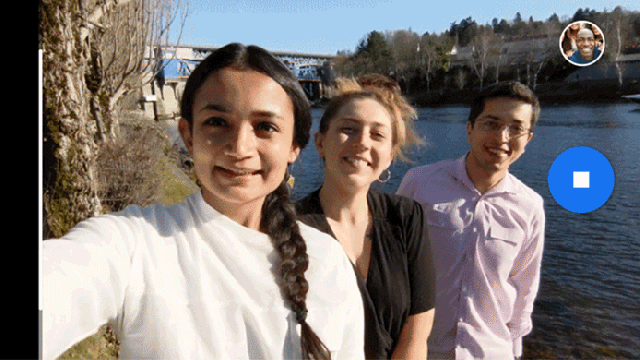Take a peek at your smartphone’s camera roll and you’ll probably find hundreds of duplicate shots, all snapped while trying to take the perfect selfie. To remedy this, Google is bringing some new AI smarts to its camera app so that it only takes a photo when everyone is selfie-ready.
Digital cameras have had features like face, smile, and blink detection for over a decade now, but simply relying on the shape and specific features of the human face has its limitations.
Smartphones, with their beefy processors, have opened up a lot of possibilities when it comes to intelligently assisting photography. Yesterday, Google revealed it’s porting some of the AI features from its Clips lifelogging camera that relied on several autonomous detection features to automatically snap the best moments throughout your day.
Clips was another Google hardware experiment that didn’t really pan out, but the software is now finding a more useful home inside the Pixel 3’s Camera app.
The app will now include more autonomous functionality in the Photobooth mode, which relinquishes the ultimate control of the shutter to the phone. In addition to ensuring eyes are opened, the app will now identify five photogenic expressions: smiles, sticking your tongue out, kisses, duck face, puffed out cheeks, and a look of surprise.
A neural network was trained to look for these stereotypical selfie expressions, which all happens in real time as users are holding their camera out, ensuring they’re properly framed in the shot.
Pressing the shutter button doesn’t instantly take a photo. It instead puts the app into its auto-detection mode, which analyses every frame, looking for the aforementioned expressions and internally evaluates the quality of the shot.
But to ensure users aren’t awkwardly waiting for the exact moment when a photo is snapped, the app now includes a thin white bar at the edge of the frame that grows and shrinks depending on what photogenic criteria have been detected.
At its smallest width, the bar indicates no faces have been detected, but when stretched all the way across the screen it signifies that everyone is perfectly in position and looking at the camera, at which point the screen will flash to indicate an image has been saved.
There are certainly critiques to be made about automating the photography process. In some ways, it can be seen as diminishing the creativity behind the art, but at the same time if it means you don’t have to painstakingly sift through 30 photos in your phone’s camera roll to find the perfect one to share on Instagram.
Applications like Photoshop have become equally streamlined through intelligent automatic processing like this, but photo editing tools that are easier to use have only improved the world of photography by making it accessible to more people.
At the least, it means your phone’s storage won’t get maxed out after one memorable night of partying.
[Google AI Blog via The Verge]
